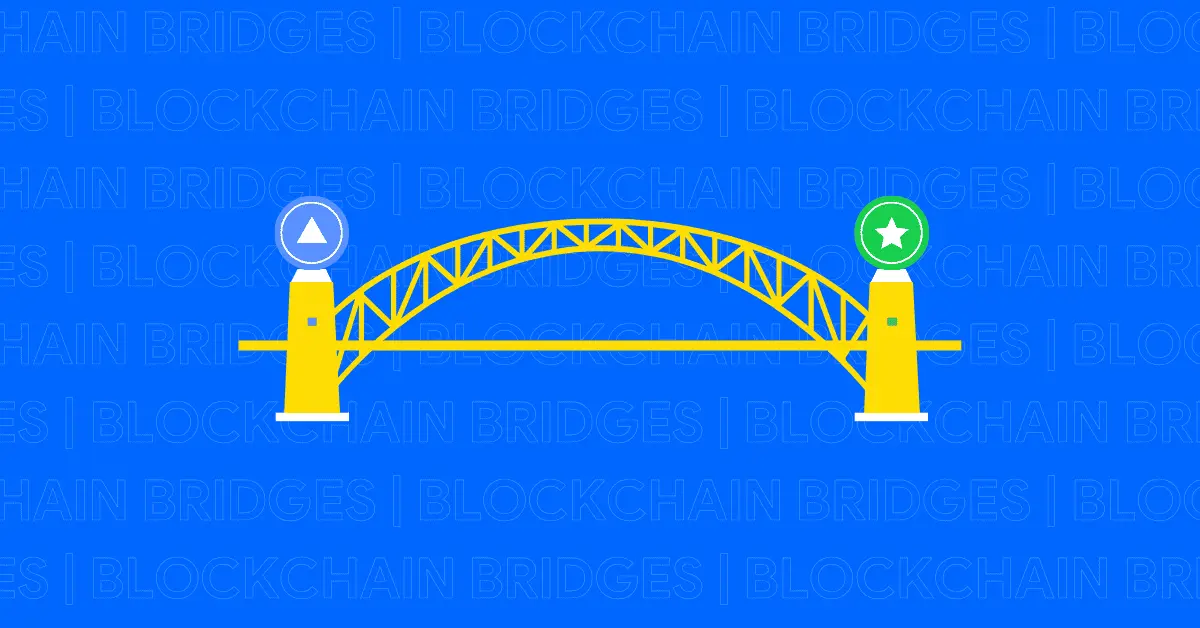
Say you’re at a party. Some people are talking about Bitcoin, others about Ethereum, and a few about Solana. They’re all excited about their own blockchains.
But here’s the catch—these blockchains don’t naturally talk to each other. It’s like a room full of people speaking different languages with no translator.
That’s where blockchain bridges come in. They act as translators, allowing blockchains to communicate. Bridges let you transfer assets, like cryptocurrencies, or even information between different blockchains.
Blockchain bridge is like a literal bridge connecting two islands. Each island is a blockchain with its own unique rules, currencies, and systems. The bridge helps people and resources travel back and forth without getting stuck.
In technical terms, a blockchain bridge is a tool that allows data, tokens, or other digital assets to move from one blockchain network to another. For instance, you might want to use Bitcoin (from the Bitcoin blockchain) on Ethereum’s network.
A bridge makes this possible.
Blockchains are like closed ecosystems. Bitcoin stays on Bitcoin’s blockchain. Ethereum stays on Ethereum’s. But sometimes, you want the best of both worlds. Here’s why bridges matter:
Collaboration: Bridges encourage different blockchains to work together rather than compete. This is great for the entire crypto ecosystem.
Alright, now let’s get into the nuts and bolts. How does a bridge actually transfer something from one blockchain to another? Here’s a step-by-step explanation:
There are two main types of blockchain bridges, and understanding them is key:
Cons:
Cons:
Let’s look at a few examples to see how bridges work in action:
While blockchain bridges are super useful, they’re not perfect. Here are some challenges they face:
Centralization Concerns: Custodial bridges can be a single point of failure. If the organization running the bridge fails or gets hacked, your assets might be at risk.
Blockchain technology is evolving fast, and bridges are no exception. Developers are working on:
You might be wondering, “Are these bridges safe to use?” The answer is: it depends. Like any technology, the safety of a blockchain bridge depends on how well it’s built and maintained. Here are some tips to stay safe:
So, there you have it—a friendly guide to blockchain bridges! They’re essential tools that make the crypto world more connected and versatile. Whether you’re a Bitcoin fan, an Ethereum enthusiast, or someone exploring newer blockchains, bridges open up exciting possibilities.
Just remember, like crossing any bridge in real life, it’s important to tread carefully. Do your research, stay informed, and enjoy exploring the interconnected world of blockchain.
A blockchain bridge allows assets or data to move between different blockchains by locking tokens and minting equivalent ones on the target network.
Blockchain bridges enable interoperability, allowing users to access benefits of multiple blockchains like faster transactions and lower fees.
Custodial bridges rely on a trusted third party, while non-custodial bridges use smart contracts for decentralized transfers without intermediaries.
Blockchain bridges are safe when using reputable platforms. However, always check for security updates and use decentralized bridges for added transparency.
CoinPedia has been delivering accurate and timely cryptocurrency and blockchain updates since 2017. All content is created by our expert panel of analysts and journalists, following strict Editorial Guidelines based on E-E-A-T (Experience, Expertise, Authoritativeness, Trustworthiness). Every article is fact-checked against reputable sources to ensure accuracy, transparency, and reliability. Our review policy guarantees unbiased evaluations when recommending exchanges, platforms, or tools. We strive to provide timely updates about everything crypto & blockchain, right from startups to industry majors.
All opinions and insights shared represent the author's own views on current market conditions. Please do your own research before making investment decisions. Neither the writer nor the publication assumes responsibility for your financial choices.
Sponsored content and affiliate links may appear on our site. Advertisements are marked clearly, and our editorial content remains entirely independent from our ad partners.
The LINK price prediction December 2025 is the main topic this week with December just…
Poland is facing a heated political clash after President Karol Nawrocki refused to approve a…
The trading industry stands at a critical crossroads: challenged by issues of financial trust and…
Investors are on the hunt for the next 10x crypto as the market enters a…
Zcash (ZEC) price has spent the past week at the bottom of the performance rankings,…
Ethereum, one of the biggest blockchain networks, is gearing up for a major upgrade. On…